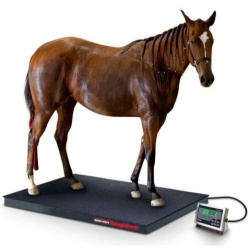Odds are that you know someone, or it might even be you… that loves their pets so much that they take great pleasure in spoiling them with excessive treats and food scraps. However, too much poor quality food, paired with a lack of physical activity, can lead to persistent weight gain.
Pet Weight Scales Can Help with Obesity
With an increase in pet obesity, it is important to use accurate measuring equipment to effectively assist in treatment. Obesity is linked to a number of health concerns such as difficulty breathing, high blood pressure, and overweight pets also have a higher risk of tumors, cancer, heart disease and arthritis. The pet’s quality of life is negatively impacted as daily activities that require stamina or mobility, such as grooming, running or climbing stairs become a strain.
The good news is that obesity and the many health risks linked to it can be prevented through proper diagnostics. When it comes to weight management, the right weighing scales for pets are necessary to track patient progress and ensure that they are losing weight at a healthy sustainable rate.
Choosing the Right Digital Pet Scales
Pet scales come in a range of sizes, depending on the type of animal being weighed. You can find everything from dog scales for sale to homemade pig scales, to scales for large animals such as horses and cattle. A scale specifically designed with movement compensation technology will give you the accuracy that other small pet scales can’t provide because it captures precise weight readings, even if the pet is moving around on the scale.
After you’ve chosen the right scale for your facility, there are two key things to remember when using the scale.
Number one: Regularly check the scale for accuracy. Each scale’s manual will have unique instructions, but the procedure is basically the same. Return the scale to zero and place a certified test weight on the scale. If the scale reading matches the test weight, the scale is accurate and you can weigh the pet. If not, you may need to recalibrate the scale prior to weighing a pet.
Number two: Don’t forget to utilize the Tare function. Before weighing the animal, you should remove the extra weight of things like kennels, trays or any other equipment by using the Tare function.

Ultimately, owners that want the best life for their pets, and with the right equipment can team up and create a better quality of life for your patients with detailed care plans. If dieting is recommended as part of the pet’s care plan, you can use a small food scale to weigh dry food and wet food for better portion control. By using the Tare function to remove the weight of the bowl or container prior to weighing the food, pet owners can confidently feed their pets the correct portions.
If you’re interested in our selection of animal weighing scales, please be sure to visit the following pages of our website including veterinary scales, cattle scales, and livestock scales. You can contact us for more info or to request a quote by completing the RFQ form on our website or by calling (919) 776-7737.